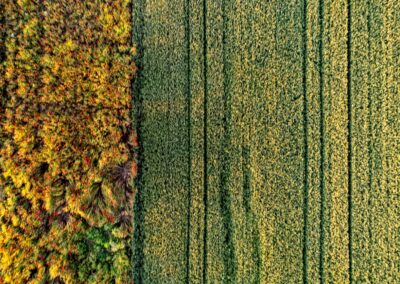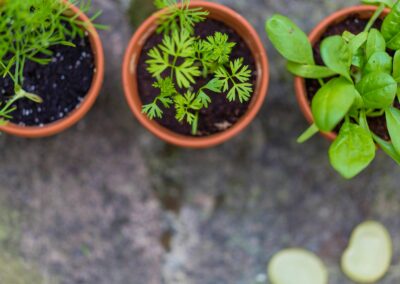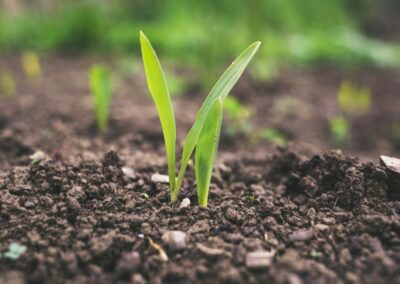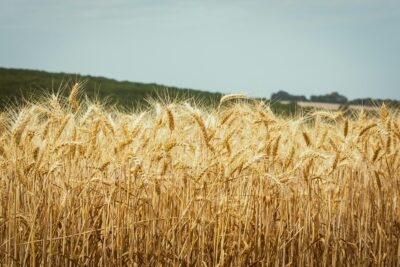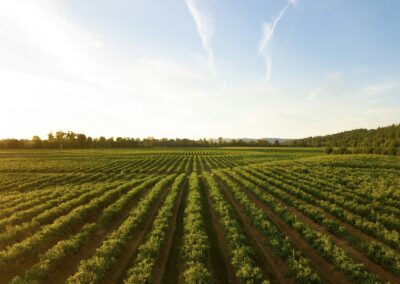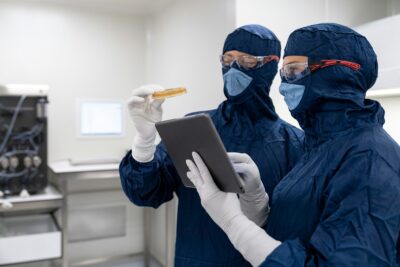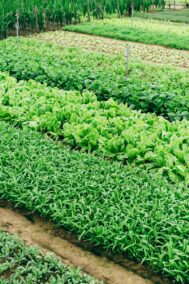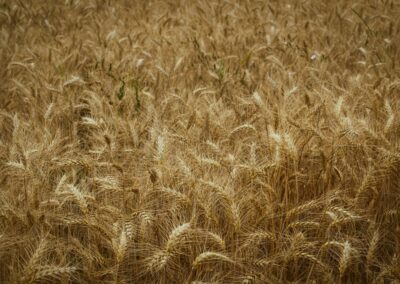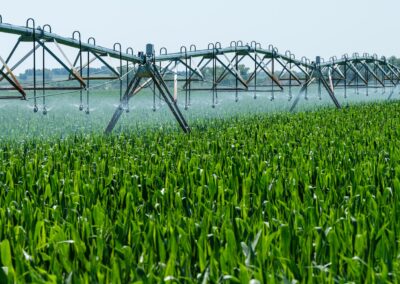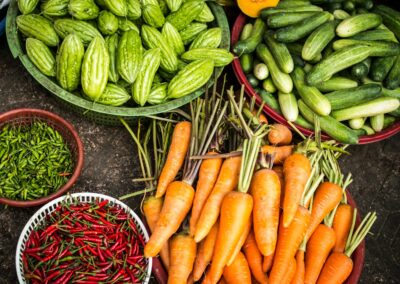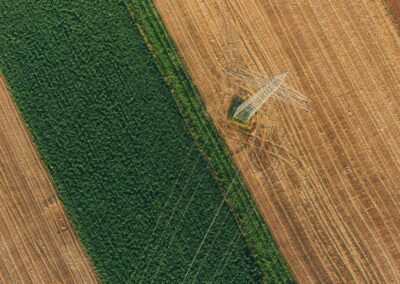Harnessing the Power of Digital Twins in Agriculture
Introduction to Digital Twins in Agriculture
The concept of digital twins in agriculture has emerged as a revolutionary approach to optimizing farming practices. By creating virtual replicas of physical assets, processes, and systems, digital twins enable farmers to monitor crop health and environmental conditions in real-time. This advanced technology integrates data from various sources, providing a comprehensive view of the agricultural landscape, which is crucial for making informed decisions.
In regions like Saudi Arabia, the UAE, and vibrant cities such as Riyadh and Dubai, where modern technology and innovation are highly valued, the application of digital twins in agriculture can significantly enhance productivity and sustainability. These areas are characterized by their rapid adoption of cutting-edge technologies, making them ideal for implementing digital twin solutions. The use of digital twins not only improves crop management but also supports the broader goals of food security and environmental stewardship.
For business executives, mid-level managers, and entrepreneurs, understanding the impact of digital twins in agriculture provides valuable insights into leveraging technology for business success. By incorporating these innovative solutions into their strategies, companies can drive growth, enhance efficiency, and contribute to sustainable development in the agricultural sector.
Real-Time Monitoring and Predictive Analytics
One of the most significant benefits of digital twins in agriculture is the ability to perform real-time monitoring and predictive analytics. Digital twins collect data from various sensors and IoT devices deployed in the fields, including soil moisture levels, temperature, humidity, and crop growth stages. This data is then processed and analyzed to provide actionable insights, enabling farmers to make timely and accurate decisions.
In the agricultural regions of Saudi Arabia and the UAE, where climate conditions can be challenging, real-time monitoring helps farmers adapt to changing environmental factors. For example, digital twins can predict potential pest infestations or disease outbreaks by analyzing patterns and trends in the data. This proactive approach allows farmers to take preventive measures, reducing crop losses and ensuring healthier yields.
Moreover, predictive analytics powered by digital twins enable farmers to optimize resource utilization. By forecasting water and fertilizer needs based on current and historical data, farmers can implement precise irrigation and fertilization strategies. This not only conserves resources but also enhances crop quality and yield. In cities like Riyadh and Dubai, where water conservation is critical, such efficient practices align with sustainability goals and contribute to long-term agricultural success.
Enhancing Crop Health and Yield
Digital twins play a crucial role in enhancing crop health and yield by providing a holistic view of the agricultural ecosystem. By simulating different scenarios and analyzing their impact on crop growth, digital twins help farmers identify the best practices for maximizing productivity. This includes optimizing planting schedules, selecting the most suitable crop varieties, and managing soil health.
In regions like Riyadh and Dubai, where agricultural land is limited, maximizing yield is essential for meeting food demand. Digital twins enable farmers to experiment with different variables in a virtual environment, identifying the optimal conditions for crop growth without risking actual resources. This experimental approach leads to better decision-making and improved crop performance.
Furthermore, digital twins facilitate precision agriculture by enabling site-specific management practices. Farmers can create detailed maps of their fields, highlighting areas that require special attention. For instance, if a particular section of the field shows signs of nutrient deficiency, farmers can apply targeted treatments to address the issue. This precision approach ensures that crops receive the necessary care, resulting in healthier plants and higher yields.
Supporting Environmental Sustainability
The implementation of digital twins in agriculture also supports environmental sustainability by promoting efficient resource management and reducing the ecological footprint of farming activities. Digital twins enable farmers to monitor and manage water usage, minimizing waste and ensuring that crops receive adequate hydration without over-irrigation. This is particularly important in arid regions like Saudi Arabia and the UAE, where water resources are scarce.
In addition, digital twins help farmers adopt sustainable farming practices by providing insights into soil health and fertility. By continuously monitoring soil conditions, farmers can implement conservation techniques such as crop rotation, cover cropping, and reduced tillage. These practices enhance soil structure, prevent erosion, and maintain soil fertility, contributing to long-term agricultural sustainability.
Moreover, digital twins facilitate the integration of renewable energy sources into agricultural operations. For example, farmers can use digital twins to optimize the placement and performance of solar panels, ensuring maximum energy generation for powering irrigation systems and other farm machinery. This reduces reliance on fossil fuels and lowers greenhouse gas emissions, aligning with global sustainability goals.
Conclusion: The Future of Agriculture with Digital Twins
The application of digital twins in agriculture is transforming the way farmers manage their crops and resources. By enabling real-time monitoring, predictive analytics, and precision farming, digital twins enhance crop health, yield, and environmental sustainability. For business executives, mid-level managers, and entrepreneurs in Saudi Arabia, the UAE, and beyond, understanding the potential of digital twins offers valuable insights into leveraging technology for agricultural innovation and business success.
As digital twin technology continues to evolve, the potential for creating more efficient and sustainable agricultural systems will expand. By embracing these innovative solutions, farmers can improve productivity, reduce resource consumption, and contribute to global food security. The future of agriculture is digital, and the integration of digital twins is leading the way in this exciting transformation.
—
#DigitalTwins #AgricultureOptimization #CropHealthMonitoring #EnvironmentalConditions #SaudiArabia #UAE #Riyadh #Dubai #ArtificialIntelligence #Blockchain #TheMetaverse #ExecutiveCoachingServices #GenerativeArtificialIntelligence #ModernTechnology #BusinessSuccess #LeadershipSkills #ProjectManagement


